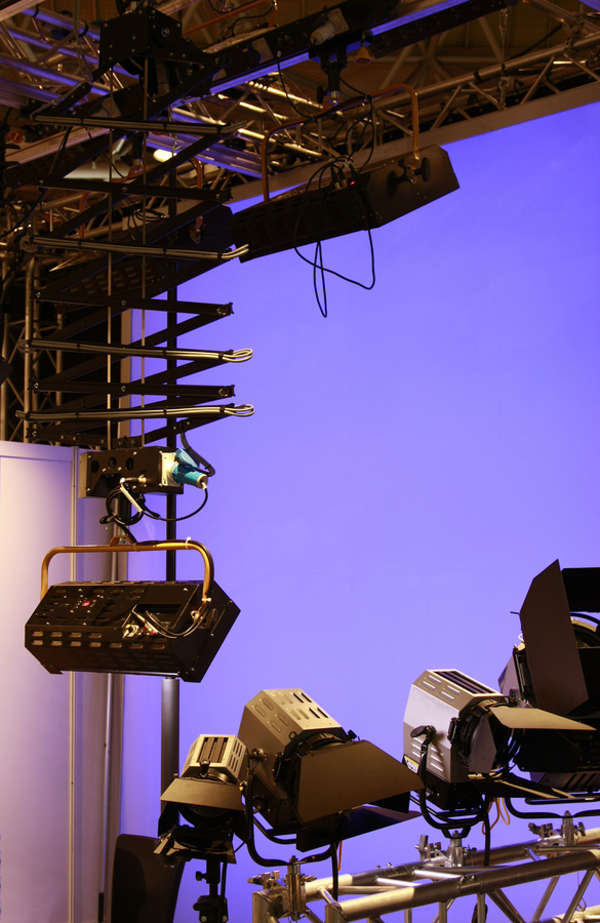< Back to all posts
Live and On-Demand Video for Effective Communications and Workplace Learning
What’s best for enterprise communications and workplace learning?
by Randy Palubiak
There’s a strong case to be made that both live and on-demand video provide compelling benefits and value depending on the organization and its respective needs. There are a number of reasons why:
—Globalization – companies need to reach employees and customers everywhere.
—Technology – robust and affordable solutions are everywhere.
—People – demand to be informed, trained, and entertained using video, typically on their mobile devices.
All of these points play a key role in making video content readily available and easily accessible. This includes when, where, and how it needs to be viewed, and when people are both available and interested in consuming it.
The strategy companies should use to design and implement their enterprise-wide video communications system is pretty much the same that best in class companies have followed for the past three-plus decades. Begin with the highest requirement, live communications, and build out from there to include interactivity (where applicable), sharing and on-demand capabilities.
The Power of Live Video
There was a time when only select industry-leading executives used video to communicate with employees and external audiences. In the early 1980s, Lee Iacocca led Chrysler out of a financial crisis through excellent leadership, better vehicles, and a dynamic on-camera presence. He appeared in television commercials focusing on their “the pride is back” campaign, and using a dedicated company-wide satellite network to conduct town hall meetings with employees about the state of the company.
Other early visionaries recognizing the value of live video communications include Fred Smith (CEO of Federal Express), Arthur Blank and Bernie Marcus (founders of The Home Depot), and John Bachman (managing partner of Edward Jones). They all used video networks throughout the 1980’s to communicate on a regular basis with employees, shareholders, strategic business partners and customers, and conducted live interviews with the news media and financial markets. In all instances, these corporate networks included interactive capabilities and devices to automatically record programs.
Modern executives are comfortable in front of a camera. In our media-centric society, it’s inevitable. Conducting live town hall meetings, executive presentations, and media interviews are now part of their normal duties. This is enabled through a broad range of available media channels including company intranets, the Internet and extranets, social media, satellite-based television (BTV) networks, and two-way video conferencing systems.
Today, content is viewed on mobile devices, digital signage screens, desktops, and large display screens in meeting rooms, conference rooms, and training centers. Thanks to advancements in social media apps like Periscope, Meerkat, SnapChat, Facebook Live and YouTube Live, live streaming is now available for everyone.
According to a survey by Opinion Matters, 73% of people said that they pay more attention to content that is happening as they view it. A separate survey conducted by Brandlive found that companies are incorporating live streaming into their marketing strategies:
–Executives most value live video’s unique ability to add an authentic human element to digital communications.
–44% of the executives surveyed said that they held at least one live streaming video event in 2015.
Cisco is a great example of a global company leveraging the power of live video. With more than 40% of their employees working outside of the country, Cisco is faced with escalating travel costs and lost productivity due to travel time. By expanding their use of video collaboration tools for live and on-demand applications, they’ve been able to save $250 million per year.
Live, Interactive Training
In addition to the executive use of video networks for communications, many companies leverage their networks for live, interactive training. They recognize the power and benefits of extending their live classrooms via technology to train people in remote locations.
The U.S. Air Force, Air National Guard, U.S. Army, U.S. Navy, F.A.A., and Department of Justice are members of the Government Educational Television Network (GETN) that includes a large number of Federal Government agencies that use a strategic blend of terrestrial and satellite networks to provide interactive distance learning globally.
According to Dr. Phil Westfall, Director of the Air Technology Network Program Management Office (ATN PMO) and General Manager of the Defense Education and Training Network, “The classroom setting is more conducive to learning for longer courses by avoiding the distractions of the office environment. The GETN network demonstrates the effectiveness of networks to emulate the classroom by conducting live, interactive instruction to classroom viewing environments at a distance.” Some of the agencies have added the capability via their satellite network to reach desktops for short video courses either live or on-demand.
It is important to note that GETN distance learning instructors point out two key findings of using interactive distance learning:
–Student performance is at least equal to residence classes.
–Costs for network transmissions, audio interaction, system maintenance, and personnel are approximately 10 percent of residence instruction.
Some of the GETN networks use keypads to conduct interactive classes, featuring polling and survey functions as well as live audio Q&A sessions. Others prefer using an audio conference bridge with push-to-talk microphone systems at each remote location for live interaction.
The network is expanding to include Army and Navy hospitals, in addition to existing Air Force medical facilities, to receive Medical Interagency Satellite Training (MIST-NG) programming. Content will originate from numerous sources, including the Veterans Administration, Defense Health Headquarters (DHHQ), and hospitals of each of the services. The objective of the DHHQ is to save millions of dollars each year in temporary travel costs and be available as a global emergency communications system.
According to Dr. Jolly Holden and Dr. Philip Westfall in their An Instructional Media Selection Guide for Distance Learning – Implications for Blended Learning, “Each distance learning medium has its strengths and weaknesses when supporting various instructional strategies. No single medium can support all instructional strategies.” The same is true for corporate communications – no single medium or channel can reach all targeted audience members!
As mentioned earlier, mobile devices and social media are changing the communications and learning landscapes. The keypads and touch screens of smartphones and tablets are used in corporate training rooms, offices, and other environments to respond to surveys and text questions as well as the use of audio for interaction with executives and instructors.
Two-way video conferencing systems are excellent for meetings and conferences as well as the origination of content for distribution over large wide area networks.

Live, interactive trainings opens up a variety of opportunities for your business.
On-Demand
The cloud provides the means for companies to make their content readily available and easily accessible, for both internal and external users to either contribute or view content. When combined with proprietary company networks and mobile devices, video content is accessible anywhere, anytime, on any device.
Additionally, media devices, similar to home cable or satellite television digital video recorders (DVRs), are excellent tools to enable on-demand capabilities at remote locations. These devices can make content available for distribution to televisions throughout the facilities as well as desktops via the corporate network.
As covered in the white paper, Video Enhances Performance Improvement, there is a push to leverage the use of mobile devices to provide content to employees at the time and point of need. The objective is to give employees access to content, including text materials and videos, to effectively do their jobs while at the counter or in the field. It is believed that on-site support, where employees can reference materials about the information they were previously trained on, provides an on-premise refresh to complete services or close sales opportunities. This gives companies the ability to boost employee performance and productivity.
For example, field service technicians can view content onsite to identify how to best address difficult, new, or unique situations. This may include the selection of chemicals or materials to complete the job. Retail sales and branch office service representatives can view video clips at the counter or desktop as a refresher on products and services to assist customers.
Utility company field service representatives can view solutions and methods to fix service points of failure due to outages as a result of inclement weather, natural disasters, or man-made disruptions.
Building the Video Ecosystem to Meet Live or On-Demand
Below, we’ll outline a useful framework for developing a strategy that determines the approach and capabilities necessary to implement or maintain an effective video-based communications and workplace learning solution. The key is to begin with the highest requirement, live communications, first. From there, you must build out to include interactivity (where applicable), sharing, and on-demand capabilities.
Live is a key driver if:
–Executives want to communicate with employees in a timely or immediate manner and with a consistent message.
–Instructor-led distance learning is a requirement.
–Live audio interaction is a requirement, whether it’s via direct dial phone call, audio conferencing bridges, or via keypads and touchpads.
A video production, video conference, insert, or distance learning studio will be required to originate live programs and manage interactive functionality. A proprietary network is necessary to deliver the content to employees. This technology should be selected based on the number of sites, the employees, and the geographic locations of both (time zones are a key consideration here, especially for international sites). It must be able to reach desktops, display screens in meeting rooms, and digital signage screens. The system should also reach mobile devices, preferably using one or more popular social media app like Periscope, Meerkat, Facebook Live or YouTube Live.
For a hybrid network that supports on-demand usage in addition to live programming, companies should leverage cloud computing and their various content management solutions and local area networks. Additionally, the system might include media devices at each location that distribute over the site CATV network or the local area network. Employees will be able to access content using the same screens available for live feeds, including mobile devices.

The required video equipment will range from extremely simple to quite complex depending on your specific business needs.
In Summary
It is difficult to imagine that in today’s competitive environment some companies might not consider using both live and on-demand video communications. Instead, it will be quite the opposite – based on technology advancements and user-driven demands, it is very likely that most of them will find live and on-demand video to be a business requirement. It will become a mission-critical business tool that helps drive business results.
Enliten strongly recommends that companies build out their video ecosystem to handle all methods of video communications for that point in time when the need arises.
If you need help finding the right video crew for your next project, especially if it’s live and on-demand, make sure to reach out to us here at Crews Control for a free quote by clicking here.







Leave a Reply